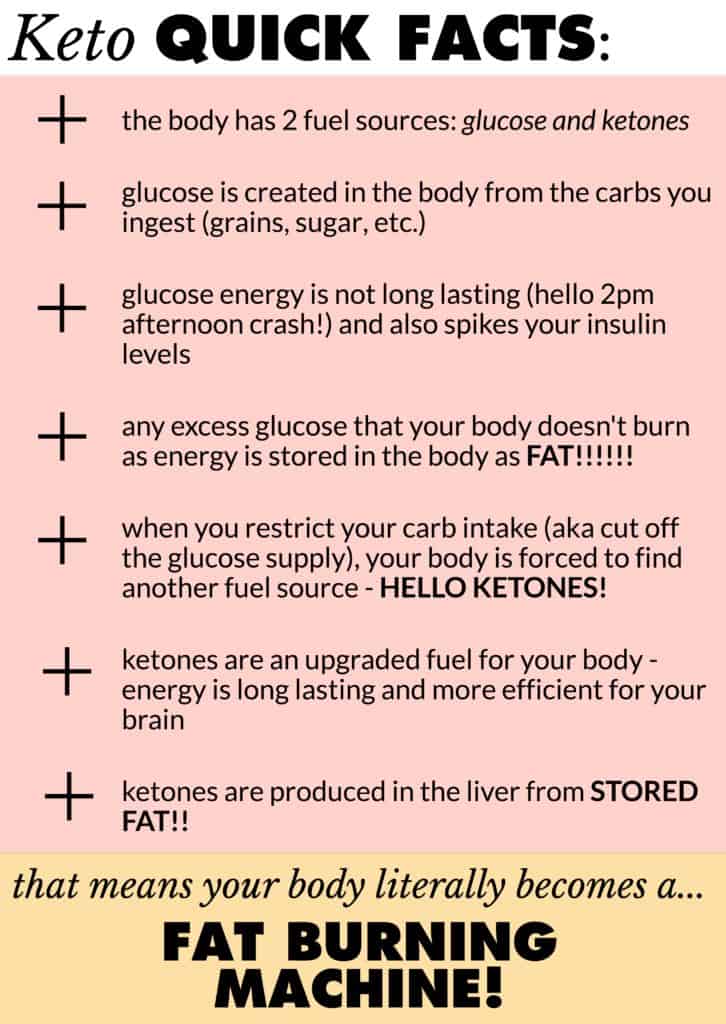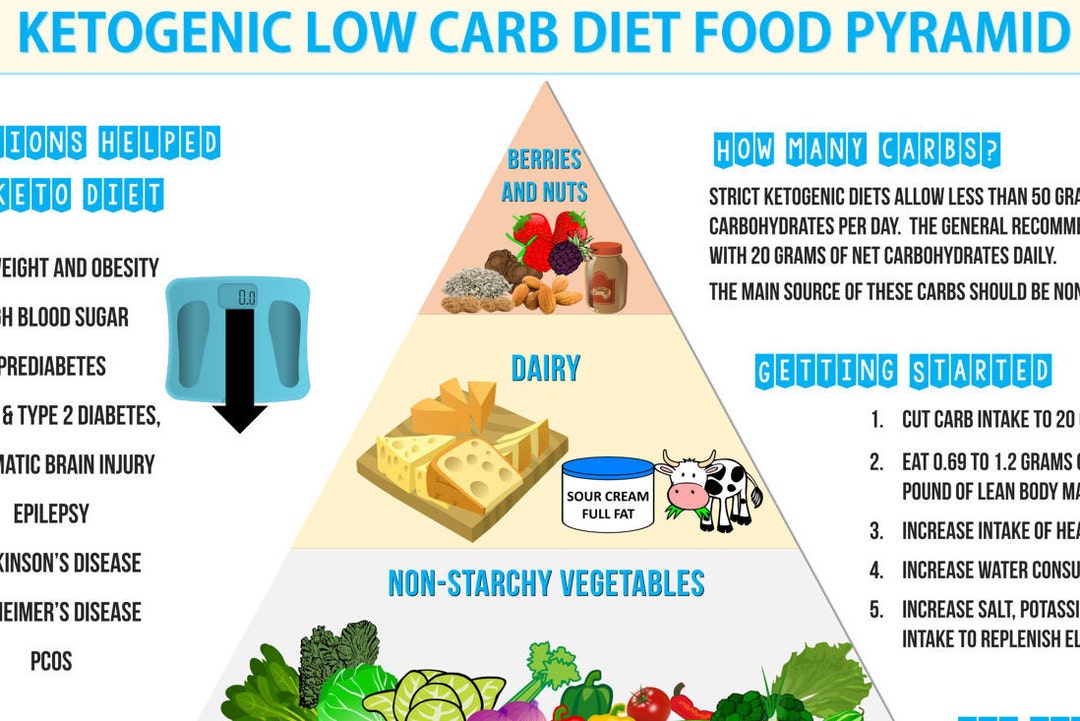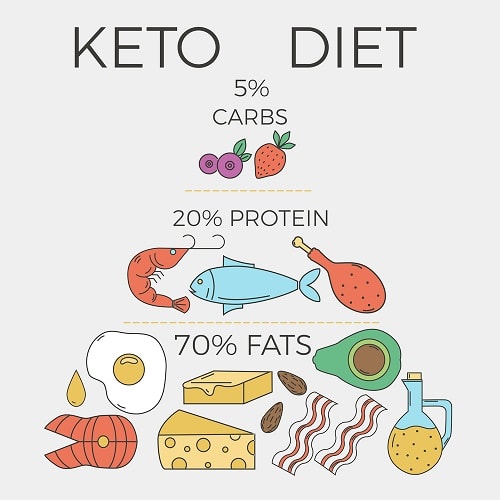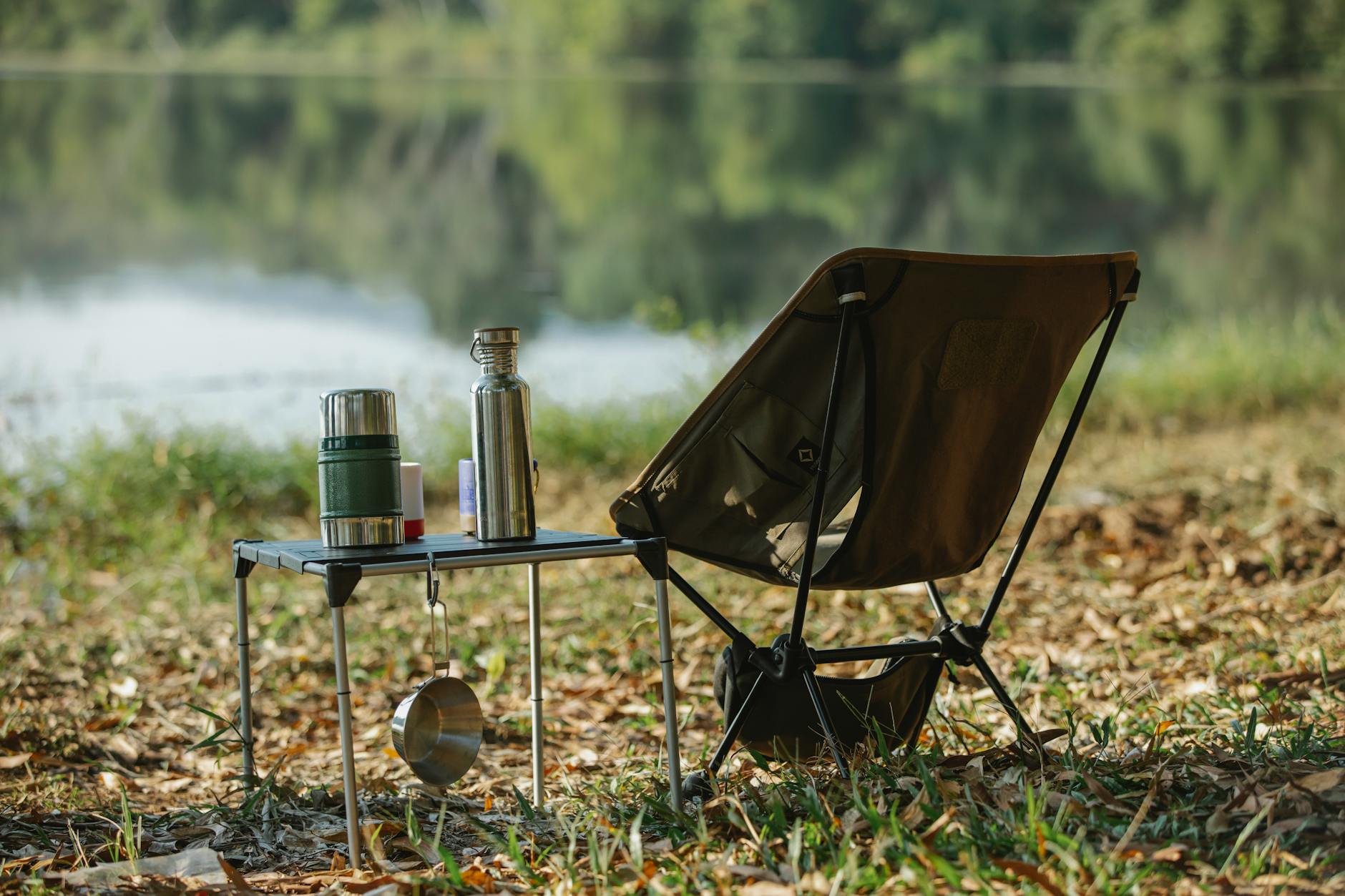Discover the simple secrets to success on the Keto diet with our comprehensive beginner’s guide. Start your journey today!
Table of Contents
- Introduction to Keto: What Is It All About?
- Planning Your Keto Diet: First Steps
- Crafting Your Keto Diet Meal Plan
- Fun With Fats: Choosing Healthy Fats on Keto
- Keeping Carbs Low: The Key to Keto Success
- Keto-Friendly Drinks: Staying Hydrated Without the Sugars
- Exercising on Keto: Tips for Staying Active and Energized
- Common Questions About Starting a Keto Diet
- Summary: Getting Ready for Your Keto Journey
Introduction to Keto: What Is It All About?
Have you ever heard about the keto diet? It’s a way of eating that has gotten really popular lately for people who want to be healthier or lose weight. Let’s dive into what the keto diet is all about and why so many people are giving it a try.
The keto diet, short for ketogenic diet, is a way of eating that focuses on reducing your intake of carbohydrates and increasing your consumption of fats. By doing this, your body shifts into a state called ketosis, where it burns fat for energy instead of carbohydrates. This helps you lose weight and can have other health benefits too.
The Science in Simple Terms
When you start a keto diet, your body goes through a process called ketosis. Imagine your body as having a power switch that changes how it gets energy. Instead of using carbs like bread and pasta for fuel, your body switches to using fat. This switch is what puts your body in a state of ketosis.
What to Expect in the First Few Weeks
During the first few weeks of starting a keto diet, you might feel a bit tired or low on energy. This is because your body is adjusting to using fat for fuel instead of carbs. It’s totally normal to feel this way as your body adapts to the changes. Remember to drink plenty of water and get enough rest to help your body through this transition.
Planning Your Keto Diet: First Steps
Starting a keto diet can be a great way to improve your health and lose weight. But before you jump into it, there are a few important first steps you need to take to set yourself up for success. Let’s talk about how to plan your keto diet to get off to a strong start.
Foods to Say Goodbye To
When starting a keto diet, it’s important to remove certain foods from your pantry that are high in carbs and sugars. These include items like sugary snacks, bread, pasta, rice, and most fruits. While these foods might be delicious, they don’t fit well with a keto lifestyle because they can kick you out of ketosis, the fat-burning state that makes keto so effective.
Keto-Friendly Foods to Stock Up On
Now that you’ve bid farewell to carb-heavy foods, it’s time to stock your kitchen with keto-friendly options. Fill your pantry and fridge with foods like leafy greens, lean meats, fatty fish, eggs, avocado, nuts, seeds, and low-carb vegetables. Having these items on hand will make it easier to stick to your keto plan and create delicious meals.
Crafting Your Keto Diet Meal Plan
When it comes to planning your meals on a keto diet, simplicity is key. Here are some easy and delicious meal ideas that are perfect for beginners:

Image courtesy of cleanketolifestyle.com via Google Images
- Breakfast: Scrambled eggs with avocado slices and bacon
- Lunch: Grilled chicken salad with olive oil dressing
- Dinner: Baked salmon with asparagus and a side of cauliflower rice
Remember, the key to a successful keto meal plan is to focus on whole, unprocessed foods and to keep your carb intake low while increasing your healthy fat consumption.
Planning for Snacks and Desserts
Snacking on a keto diet doesn’t have to be boring or restrictive. Here are some ideas for keto-friendly snacks and desserts that will satisfy your cravings:
- Snacks: Almonds, cheese sticks, or celery sticks with peanut butter
- Desserts: Sugar-free jello, dark chocolate squares, or keto-friendly cheesecake
By planning ahead and having these snacks and treats on hand, you can stay on track with your keto diet and never feel like you’re missing out on tasty food options.
Fun With Fats: Choosing Healthy Fats on Keto
When it comes to the keto diet, not all fats are created equal. Good fats, like avocados, nuts, and olive oil, are excellent choices that can help keep your body healthy and satisfied. On the other hand, not-so-good fats, such as trans fats found in fried and processed foods, should be limited as they can have negative effects on your health.
Keto Recipes That Are Rich in Healthy Fats
If you’re looking for delicious ways to incorporate healthy fats into your keto diet, try out these simple recipes. Start your day with a creamy avocado and egg breakfast bowl or indulge in a decadent dark chocolate avocado mousse for a satisfying dessert. These recipes not only taste great but also provide your body with the essential fats it needs to thrive on a keto lifestyle.
Keeping Carbs Low: The Key to Keto Success
When you’re on a keto diet, it’s essential to keep an eye on your carb intake. But not all carbs are created equal! Net carbs are the ones you really need to focus on. Net carbs are calculated by subtracting the fiber content from the total carbs in a serving of food. Fiber isn’t fully absorbed by the body, so it doesn’t impact your blood sugar levels like other carbs do. This means that foods high in fiber can still be keto-friendly if they’re low in net carbs.

Image courtesy of www.etsy.com · In stock via Google Images
Tricks to Keeping Carbs Down
Reducing carbs on a keto diet may seem challenging at first, but with a few tricks up your sleeve, it can be a piece of cake – or a piece of cheese, which is more keto-friendly! Here are some simple strategies to help you keep your carb intake low and your keto journey on track:
1. Replace high-carb foods with low-carb alternatives: Swap out pasta for zoodles (zucchini noodles) and bread for lettuce wraps to lower your carb intake while still enjoying your favorite dishes.
2. Focus on whole foods: Stick to whole, unprocessed foods like vegetables, nuts, seeds, and lean proteins to naturally reduce your carb consumption and fuel your body with essential nutrients.
3. Read labels carefully: Always check the nutrition labels on packaged foods to identify hidden carbs and make informed choices about what you’re eating. Look for products with minimal ingredients and no added sugars to stay on track.
4. Plan ahead: Meal prepping and planning your snacks in advance can help you avoid impulsive carb-heavy choices when you’re hungry. Prepare keto-friendly meals and snacks to have on hand so you’re always ready to make a healthy choice.
By understanding the role of net carbs in your diet and implementing simple strategies to keep your carb intake low, you’ll set yourself up for success on your keto journey. Don’t be intimidated – with a little know-how and planning, you can enjoy delicious and satisfying meals while reaping the benefits of a low-carb lifestyle!
Keto-Friendly Drinks: Staying Hydrated Without the Sugars
When following a keto diet, it’s important to stay hydrated, but not all drinks are suitable for this way of eating. Let’s explore some delicious beverages that are perfect for staying hydrated on a keto diet.
| Meal Options | Allowed Foods | Avoid |
|---|---|---|
| Breakfast | Eggs, avocado, bacon | Bread, cereal, sugary fruits |
| Lunch | Grilled chicken salad, veggies with olive oil | Pasta, rice, high-carb vegetables |
| Dinner | Salmon with butter, cauliflower mash | Potatoes, pizza, dessert |
| Snacks | Nuts, cheese, keto-friendly protein bars | Chips, candy, sugary drinks |
Best Drinks for a Keto Diet
1. Water: The ultimate keto-friendly drink, water has zero carbs, calories, and sugars. It’s essential for keeping your body hydrated and functioning optimally.
2. Herbal Tea: Herbal teas like peppermint, chamomile, or green tea are great choices for keto followers. They are flavorful, hydrating, and can be enjoyed hot or cold.
3. Coffee: Black coffee is a keto-friendly option, as it has no carbs or sugars. Just be mindful of any added sweeteners or high-carb creamers that can derail your keto efforts. Adding a splash of unsweetened almond or coconut milk is a better choice.
4. Sparkling Water: If you’re craving something fizzy, opt for sparkling water. Look for brands without added sugars or artificial sweeteners to keep it keto-friendly.
Drinks to Avoid
1. Sugary Sodas: Regular sodas are packed with sugar and will quickly kick you out of ketosis. It’s best to steer clear of these sugary beverages when following a keto diet.
2. Fruit Juices: While fruit juices may seem healthy, they are often filled with hidden sugars and are high in carbs. Stick to whole fruits in moderation instead.
3. Alcoholic Beverages: Cocktails, beer, and certain wines can be high in carbs and sugar, making them a poor choice for keto. Opt for dry wines, spirits like vodka or tequila, or low-carb beers if you choose to drink occasionally.
By choosing hydrating, keto-friendly drinks and avoiding sugary beverages, you can stay on track with your keto diet and support your overall health and wellness goals.
Exercising on Keto: Tips for Staying Active and Energized
Gearing up to exercise while following the keto diet? Great choice! Let’s dive into how you can stay active and energized while on this high-fat, low-carb eating plan.

Image courtesy of fastingwell.com via Google Images
Your Keto Diet Exercise Plan
Exercise is important for overall health and wellness, even when you’re on a keto diet. Choosing activities that you enjoy is key to staying motivated. To keep your energy levels up, opt for exercises that don’t rely solely on carbohydrates for energy. Activities like walking, swimming, yoga, or weight training can be great options. Try different types of workouts to find what you love and what makes you feel your best.
Balancing Nutrition and Fitness
When you’re active on the keto diet, it’s crucial to fuel your body properly. Since you’ll be consuming fewer carbs, your body will rely more on fats and protein for energy. Make sure to include healthy fats like avocado, nuts, and olive oil in your meals to help sustain your energy levels during exercise.
It’s also important to listen to your body. If you’re feeling tired or low on energy, consider adding more protein to your meals to give you a boost. Remember to stay hydrated and drink plenty of water before and after your workouts to keep your body functioning at its best.
Common Questions About Starting a Keto Diet
For those who are new to the idea of a keto diet, it’s only natural to have questions. Let’s address some common concerns that may arise as you embark on this new way of eating.
FAQs
1. What exactly is a keto diet?
A keto diet is a low-carb, high-fat eating plan that aims to shift your body into a state of ketosis, where it burns fat for fuel instead of carbohydrates. This change in fuel source can lead to weight loss and other health benefits.
2. How do I know if the keto diet is right for me?
The keto diet may be beneficial for those looking to lose weight, improve energy levels, or manage certain health conditions. Consulting with a healthcare provider before starting any new diet is always a smart idea, especially if you have underlying health concerns.
3. What can I eat on a keto diet?
On a keto diet, you’ll focus on consuming foods high in healthy fats, moderate in protein, and very low in carbohydrates. This means plenty of avocados, nuts, seeds, fatty fish, and low-carb vegetables, while avoiding things like grains, sugar, and starchy foods.
4. Will I feel hungry all the time on a keto diet?
Initially, you may experience some hunger as your body adjusts to using fat for fuel instead of carbs. However, many people find that the high-fat content of keto meals helps keep them feeling full and satisfied for longer periods, which can reduce overall hunger levels.
5. Is it difficult to stick to a keto diet in social situations?
While it can take some extra planning, sticking to a keto diet in social situations is manageable. You can opt for keto-friendly options at gatherings, and many restaurants now offer low-carb choices that align with a keto lifestyle.
6. Can I eat out at restaurants while on a keto diet?
Yes, you can still enjoy dining out while following a keto diet. Many restaurants offer dishes that can be easily modified to fit a keto eating plan, such as requesting salads without croutons or choosing grilled protein and non-starchy vegetables as sides.
7. How long does it take to see results on a keto diet?
Individual results vary, but many people experience weight loss and increased energy within the first few weeks of starting a keto diet. Remember that everyone’s body is different, so it’s essential to be patient and consistent with your new eating plan.
Summary: Getting Ready for Your Keto Journey
So, you’re all set to embark on your keto journey! Let’s quickly recap what we’ve covered to ensure you’re fully prepared and ready to go.
Keto Diet Plan
Before diving into the world of keto, it’s essential to have a solid plan in place. Make sure you’re well-versed in the types of foods you can eat and those you should avoid. Prep your kitchen by clearing out any non-keto-friendly ingredients and stock up on plenty of healthy fats and low-carb options.
Keto Diet for Beginners
As a beginner, it’s crucial to ease into the keto diet and be patient with your body as it adjusts. Expect some initial tiredness as your body switches from using carbs to fats for fuel. Remember, this is all part of the process, and soon you’ll start feeling the benefits of the keto lifestyle.
By taking these first steps, you’re setting yourself up for success on your keto journey. Stay committed, stay positive, and get ready to experience the amazing benefits of the keto diet!





